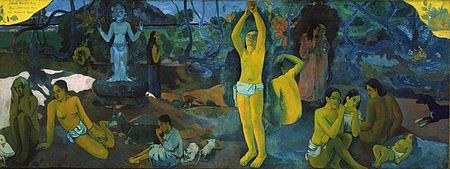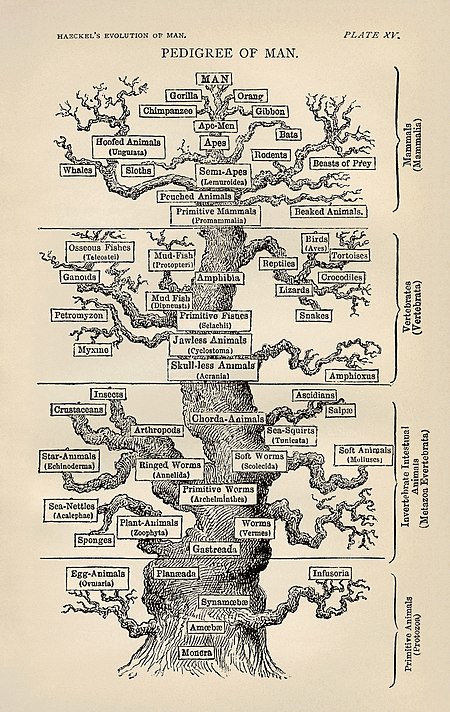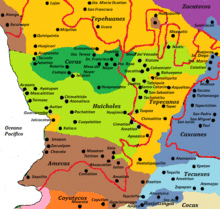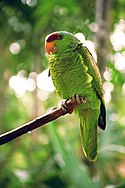Nayarit
| |||||||||||||||||||||||||||||||||||||||||||||||||||||||||||||||||||||||||||||||||||||||||||||||||||||||||||||||||||||||||||||||||||||||||||||||||||||||||||||||||||||||||||||||||||||||||||||||||||||||||||||||||||||||||||||||
Read other articles:

Place in Lower Saxony, Germany Town in Lower Saxony, GermanyBad Bentheim TownBad Bentheim with its castle FlagCoat of armsLocation of Bad Bentheim within Grafschaft Bentheim district Bad Bentheim Show map of GermanyBad Bentheim Show map of Lower SaxonyCoordinates: 52°18′11″N 07°09′35″E / 52.30306°N 7.15972°E / 52.30306; 7.15972CountryGermanyStateLower SaxonyDistrictGrafschaft Bentheim Government • Mayor (2021–26) Volker Pannen[1] (SPD…

Koordinat: 33°03′32″N 44°15′08″E / 33.058829°N 44.252153°E / 33.058829; 44.252153 (Sippar) Dekat dengan Babilonia, Sipar adalah tambahan awal untuk kekaisarannya di bawah kekuasaan Hammurabi. Sippar (Sumeria: 𒌓𒄒𒉣𒆠, Zimbir) adalah sebuah kota Sumeria dan Babel Timur Dekat kuno di tepi timur sungai Efrat.[1] tell-nya terletak di situs modern Tell Abu Habbah dekat Yusufiyah di Kegubernuran Baghdad, Irak, sekitar 60 km dari utara B…

Artikel ini sebatang kara, artinya tidak ada artikel lain yang memiliki pranala balik ke halaman ini.Bantulah menambah pranala ke artikel ini dari artikel yang berhubungan atau coba peralatan pencari pranala.Tag ini diberikan pada November 2022. Aida Hadžialić Menteri Sekolah Menengah Keatas, Pendidikan Dewasa dan PelatihanMasa jabatan3 Oktober 2014 – 15 Agustus 2016Penguasa monarkiCarl XVI GustafPerdana MenteriStefan LöfvenPendahuluPosisi baruPenggantiAnna Ekström Informasi priba…

Частина серії проФілософіяLeft to right: Plato, Kant, Nietzsche, Buddha, Confucius, AverroesПлатонКантНіцшеБуддаКонфуційАверроес Філософи Епістемологи Естетики Етики Логіки Метафізики Соціально-політичні філософи Традиції Аналітична Арістотелівська Африканська Близькосхідна іранська Буддійсь…

Supporters of association football club West Ham United supporters West Ham fans outside Upton Park International Supporters' banners West Ham United F.C. supporters are the followers of the London-based West Ham United Football Club, who were founded as Thames Ironworks in 1895. There are 700,000 fans on the club's database and over 2,300,000 likes on Facebook.[1] The club's website is in the top ten most visited websites for English football clubs by people in the USA.[2] Their…

Historic Art Nouveau house in Brussels, Belgium Van Rysselberghe HouseMaison Van Rysselberghe (French)Huis Van Rysselberghe (Dutch)General informationTypeTown houseArchitectural styleEclecticism, Art NouveauAddressRue de Livourne / Livornostraat 83Town or city1050 Ixelles, Brussels-Capital RegionCountryBelgiumCoordinates50°49′41″N 4°21′39″E / 50.82806°N 4.36083°E / 50.82806; 4.36083Completed1912Design and constructionArchitect(s)Octave van Rysselberg…

Sporting event delegationFrance at the2011 World Championships in AthleticsWA codeFRANational federationFédération Française d'AthlétismeWebsitewww.athle.orgin DaeguCompetitors39Medals Gold 0 Silver 1 Bronze 3 Total 4 World Championships in Athletics appearances197619801983198719911993199519971999200120032005200720092011201320152017201920222023← 2009 2013 → France competed at the 2011 World Championships in Athletics from August 27 to September 4 in Daegu, South Korea. Team selec…

Skanstullsbron in July 2006. Skanstullsbron and Johanneshovsbron viewed from south-west in April 2006. Skanstullsbron (Swedish: The Fortlet Tollgate Bridge) is a bridge in central Stockholm, Sweden. Overpassing the older bridge Skansbron, it connects the major island Södermalm to the southern district Johanneshov. The first proposal for an elevated bridge stretching over the canal Hammarbykanalen was produced in 1921, before work on the lower Skansbron bridge began in 1923. It remained the favo…

American music video director Christian BreslauerBornChristian Kurt BreslauerDavie, Florida, U.S.Occupation(s)Music video director, Commercial directorYears active2013–present Christian Breslauer is an American music video director.[1][2][3] He is known for his work with Lil Nas X, Doja Cat, Lizzo, SZA and Ariana Grande.[4][5][6] Breslauer's music video for Industry Baby was nominated for Video of the Year at the 2022 MTV Video Music Awards,…

Part of a series onGlobal surveillance Disclosures Origins Pre-2013 2013–present Reactions Systems XKeyscore PRISM ECHELON Sentient Carnivore Dishfire Stone Ghost Tempora Frenchelon Fairview MYSTIC DCSN Boundless Informant Bullrun Pinwale Stingray SORM RAMPART-A Mastering the Internet Jindalee Operational Radar Network Agencies NSA R&AW CSE BND CNI ASIO DGSE Five Eyes FSB MSS GCHQ Places The Doughnut Fort Meade Menwith Hill Pine Gap Southern Cross Cable Utah Data Center Bad Aibling Station…

13th Territorial Governor of Washington Eugene Semple13th Governor of Washington TerritoryIn officeApril 9, 1887 – April 9, 1889Appointed byGrover ClevelandPreceded byWatson C. SquireSucceeded byMiles Conway Moore Personal detailsBorn(1840-06-12)June 12, 1840Bogotá, ColombiaDiedAugust 28, 1908(1908-08-28) (aged 68)San Diego, California, U.S.Political partyDemocraticSpouseRuth A. LownsdaleSignature This detail from a 1911 map shows the city's Industrial District (after the constr…

Bakung lelabah merah Lycoris radiata TaksonomiDivisiTracheophytaSubdivisiSpermatophytesKladAngiospermaeKladmonocotsOrdoAsparagalesFamiliAmaryllidaceaeSubfamiliAmaryllidoideaeTribusLycorideaeGenusLycorisSpesiesLycoris radiata Herb., 1819 Tata namaBasionimAmaryllis radiata Sinonim takson Amaryllis radiata L'Hér. Lycoris terracianii Dammann Nerine japonica Miq. Nerine radiata (L'Hér.) Sweet Orexis radiata (L'Hér.) Salisb.[1] lbs Lycoris radiata (Hanzi: 彼岸花, Jepang: ヒガ�…

Potassium formate[1] Names Preferred IUPAC name Potassium formate Identifiers CAS Number 590-29-4 Y 3D model (JSmol) Interactive image ChemSpider 11054 N ECHA InfoCard 100.008.799 PubChem CID 11539 UNII 25I90B156L Y CompTox Dashboard (EPA) DTXSID6029626 InChI InChI=1S/CH2O2.K/c2-1-3;/h1H,(H,2,3);/q;+1/p-1 NKey: WFIZEGIEIOHZCP-UHFFFAOYSA-M NInChI=1/CH2O2.K/c2-1-3;/h1H,(H,2,3);/q;+1/p-1Key: WFIZEGIEIOHZCP-REWHXWOFAK SMILES C(=O)[O-].[K+] Properties Chemic…

This article is about the Mexican state. For that state's capital city, see San Luis Potosí (city). For the Bolivian city, see Potosí. For the football team, see San Luis F.C. State of Mexico State in MexicoSan Luis PotosíStateFree and Sovereign State of San Luis PotosíEstado Libre y Soberano de San Luis Potosí (Spanish) Coat of armsState of San Luis Potosí within MexicoCoordinates: 22°36′N 100°26′W / 22.600°N 100.433°W / 22.600; -100.433CountryMexicoCapital…

Artikel ini sebatang kara, artinya tidak ada artikel lain yang memiliki pranala balik ke halaman ini.Bantulah menambah pranala ke artikel ini dari artikel yang berhubungan atau coba peralatan pencari pranala.Tag ini diberikan pada November 2022. Jean BrochardBerkas:Jean Brochard.jpgLahir(1893-03-12)12 Maret 1893Nantes, PrancisMeninggal17 Juni 1972(1972-06-17) (umur 79)Nantes, PrancisPekerjaanPemeranTahun aktif1933–1966 Jean Brochard (12 Maret 1893 – 17 Juni 1972) adal…

Approach to biology Feminist biology is an approach to biology that is concerned with the influence of gender values, the removal of gender bias, and the understanding of the overall role of social values in biological research and practices.[1] Feminist biology was founded by, among others, Ruth Bleier of the University of Wisconsin-Madison (who authored the 1984 work Science and Gender: A Critique of Biology and Its Theories on Women and inspired the university's endowed fellowship for…

Radio station in Dayton, OhioWHKODayton, OhioBroadcast areaDayton metropolitan areaCincinnati metropolitan areaFrequency99.1 MHz (HD Radio)BrandingK99.1FMProgrammingLanguage(s)EnglishFormatCountrySubchannelsHD2: Classic hits (WZLR)HD3: Urban oldiesAffiliationsCompass Media NetworksOwnershipOwnerCox Media Group(CMG Radio Operating Company, LLC)Sister stationsWHIOWHIO-FMWHIO-TVWZLRHistoryFirst air date1946 (1946)Former call signsWHIO-FM (1946–1989)Call sign meaningA portmanteau of former WH…

Extremadura Unida Presidente Pedro Cañada CastilloSecretario/a general José María Gijón PoloFundación 1980 [1]Ideología Extremeñismo RegionalismoTransversalimoConservadurismoPosición CentroderechaSede José Luis Cotallo, 1CáceresPaís EspañaAsamblea de Extremadura 0/65Concejales 4/3350Sitio web extremaduraunida.es1 A partir de Acción Regional Extremeña, integrante de Unión de Centro Democrático.[editar datos en Wikidata] Extremadura Unida es un partido político…

Roman Catholic order founded in 1120 White Canons redirects here. For the White Friars, see Carmelites. Order of Canons Regular of PrémontréCandidus et Canonicus Ordo PraemonstratensisShield of the PremonstratensiansAbbreviationOPraemFormation1120TypeCatholic religious orderHeadquartersViale Giotto, 27, 00153 Rome, ItalyLocationWorldwideCoordinates41°52′44.07″N 12°29′19.39″E / 41.8789083°N 12.4887194°E / 41.8789083; 12.4887194Region served WorldwideMembershi…

Former railway station in England For the Wantage Tramway station, see Wantage railway station. Wantage RoadWantage Road station just prior to closure showing preserved Wantage Tramway loco Shannon.General informationLocationGrove, District of Vale of White HorseEnglandGrid referenceSU414913Platforms2Other informationStatusDisusedHistoryOriginal companyGreat Western RailwayPre-groupingGWRPost-groupingGWR Western Region of British RailwaysKey dates1846Opened7 December 1964Closed for passengers29 …





























